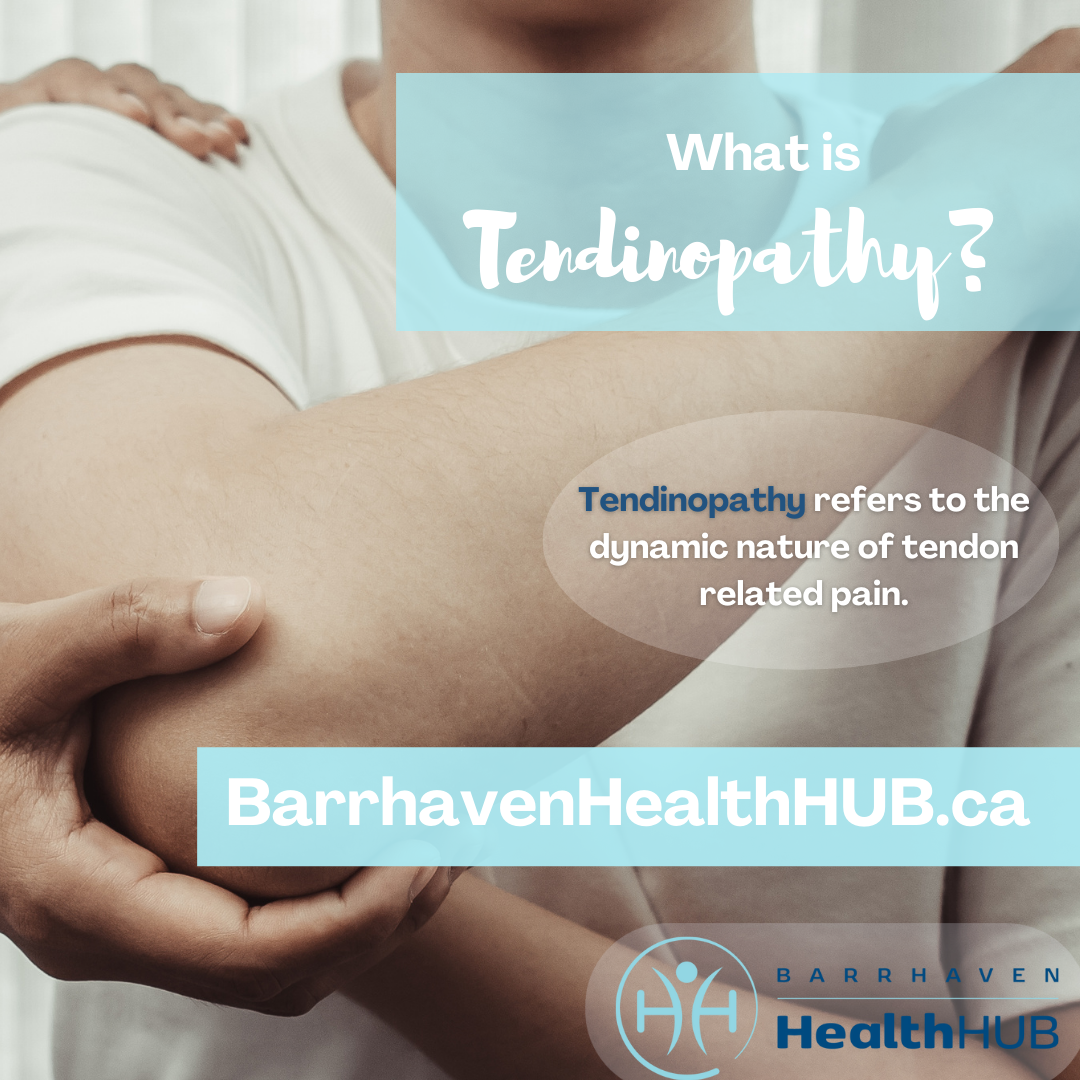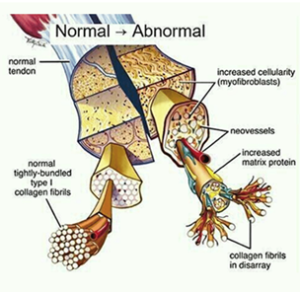What is tendinopathy? By Terry Christensen

Tendinopathy is now the preferred term to reflect the dynamic nature of tendon related pain. We are moving away from tendinitis or tendinosis. Tendinopathy is easily one of the most common conditions we see in the clinic, however there is a lot of misinformation out there.

Here are some facts that are reflected in the current body of literature and some clinical guidelines summarized by tendon expert Peter Malliaras:
1) Tendinopathy does not improve with rest – the pain may settle but returning to activity is often painful again because rest does nothing to increase the tolerance of the tendon to load.
2) Although there are some inflammatory biochemical and cells involved in tendinopathy, it is not considered to be a classic inflammatory response. Anti-inflammatories may help if you have very high pain levels but it is unclear what effect they have on the actual cells and pathology.
3) Tendinopathy can be caused by many different risk factors. The main factor is a sudden change in certain activities – these activities include 1) those that require the tendon to store energy (i.e. walking, running, jumping), and 2) loads that compress the tendon. Some people are predisposed because of biomechanics (e.g. poor muscle capacity or endurance) or systemic factors (e.g. age, menopause, elevated cholesterol, increased susceptibility to pain, etc). Predisposed people may develop tendon pain with even subtle changes in their activity.
4) Exercise is the most evidence based treatment for tendinopathy. Tendons need to be loaded progressively so that they can develop greater tolerance to the loads that an individual needs to endure in their day-to-day life. In a vast majority of cases (but not all) tendinopathy will not improve without this vital load stimulus.
5) Modifying load is important in settling tendon pain. This often involves reducing (at least in the short-term) abusive tendon load that involves energy storage and compression.
6) Pathology on imaging is NOT equal to pain – pathology is common in people without pain. Also, if you have been told you have ‘severe pathology’ or even ‘tears’ this DOES NOT necessarily mean you will not get better or have a poorer outcome. Further, we know that even with the best intentioned treatment (exercise, injections, etc) the pathology is not likely to reverse in most cases. Therefore, most treatments are targeted towards improving pain and function, rather than tissue healing, although this is still a consideration.
7) Tendinopathy rarely improves long term with only passive treatments such as massage, therapeutic ultrasound, injections, shock-wave therapy etc. Exercise is often the vital ingredient and passive treatments are adjuncts. Multiple injections in particular should be avoided, as this is often associated with a poorer outcome.
8) Exercise needs to be individualised. This is based on the individual’s pain and function presentation. There should be progressive increase in load to enable restoration of goal function whilst respecting pain.
9) Tendinopathy responds very slowly to exercise. You need to have patience, ensure that exercise is correct and progressed appropriately, and try and resist the common temptation to accept ‘short cuts’ like injections and surgery. There are often no shortcuts.
Please note that these are general principles and there are instances when adjuncts, including injections and surgery are very appropriate in the management of tendinopathy.
That all said we need to individualize our treatment protocols and recognize that everyone has a different starting point, different needs, and expectations and a different end point.
REFERENCES
Abate M, Gravare-Silbernagel K, Siljeholm C, et al.: Pathogenesis of tendinopathies: inflammation or degeneration? Arthritis Research and Therapy. 2009, 11:235.
Cook J, Purdam C: Is compressive load a factor in the development of tendinopathy? British Journal of Sports Medicine. 2012, 46:163-168.
Littlewood C, Malliaras P, Bateman M, et al.: The central nervous system–An additional consideration in ‘rotator cuff tendinopathy and a potential basis for understanding response to loaded therapeutic exercise. Manual therapy. 2013.
Malliaras P, Barton CJ, Reeves ND, Langberg H: Achilles and Patellar Tendinopathy Loading Programmes. Sports Medicine. 2013:1-20.
